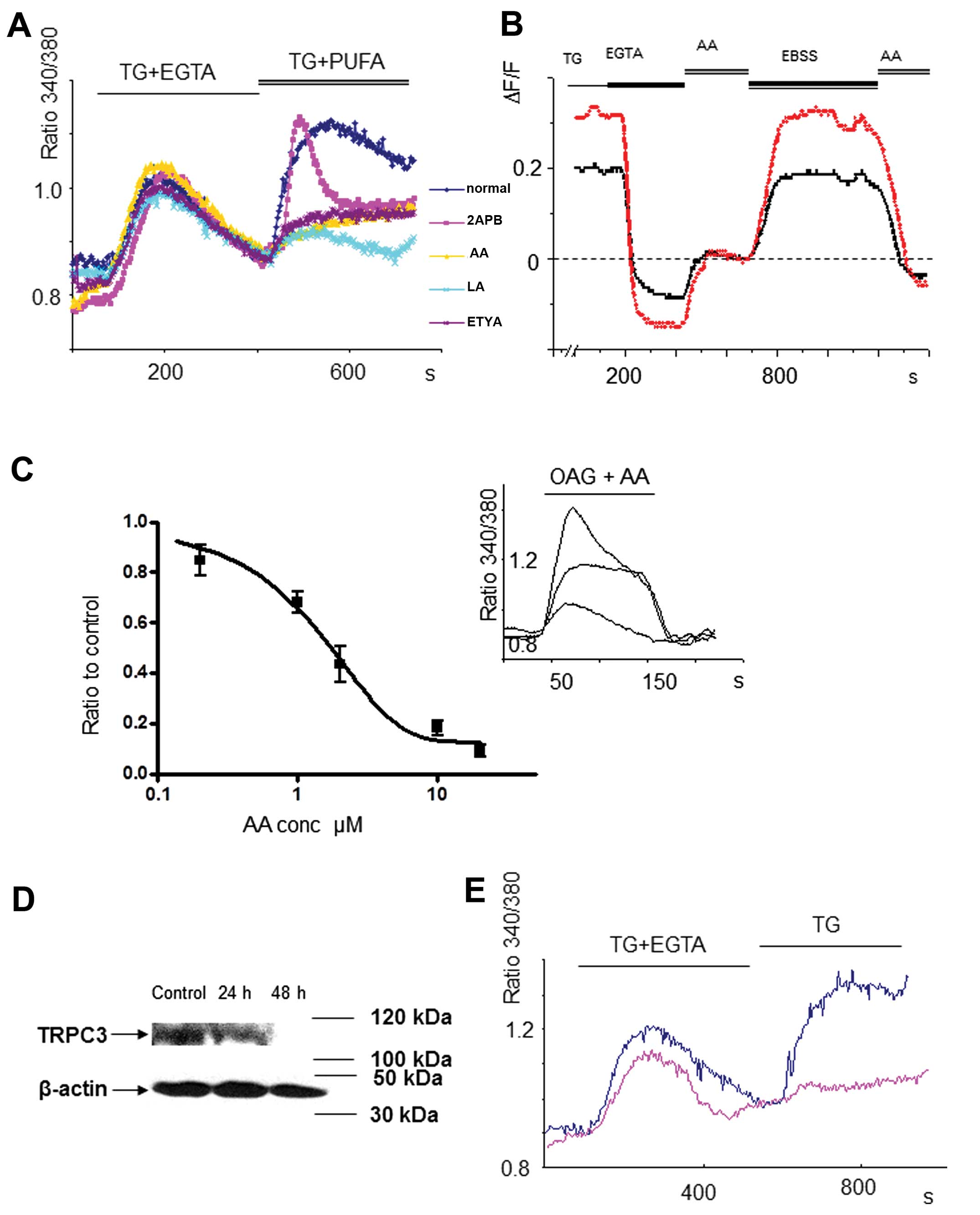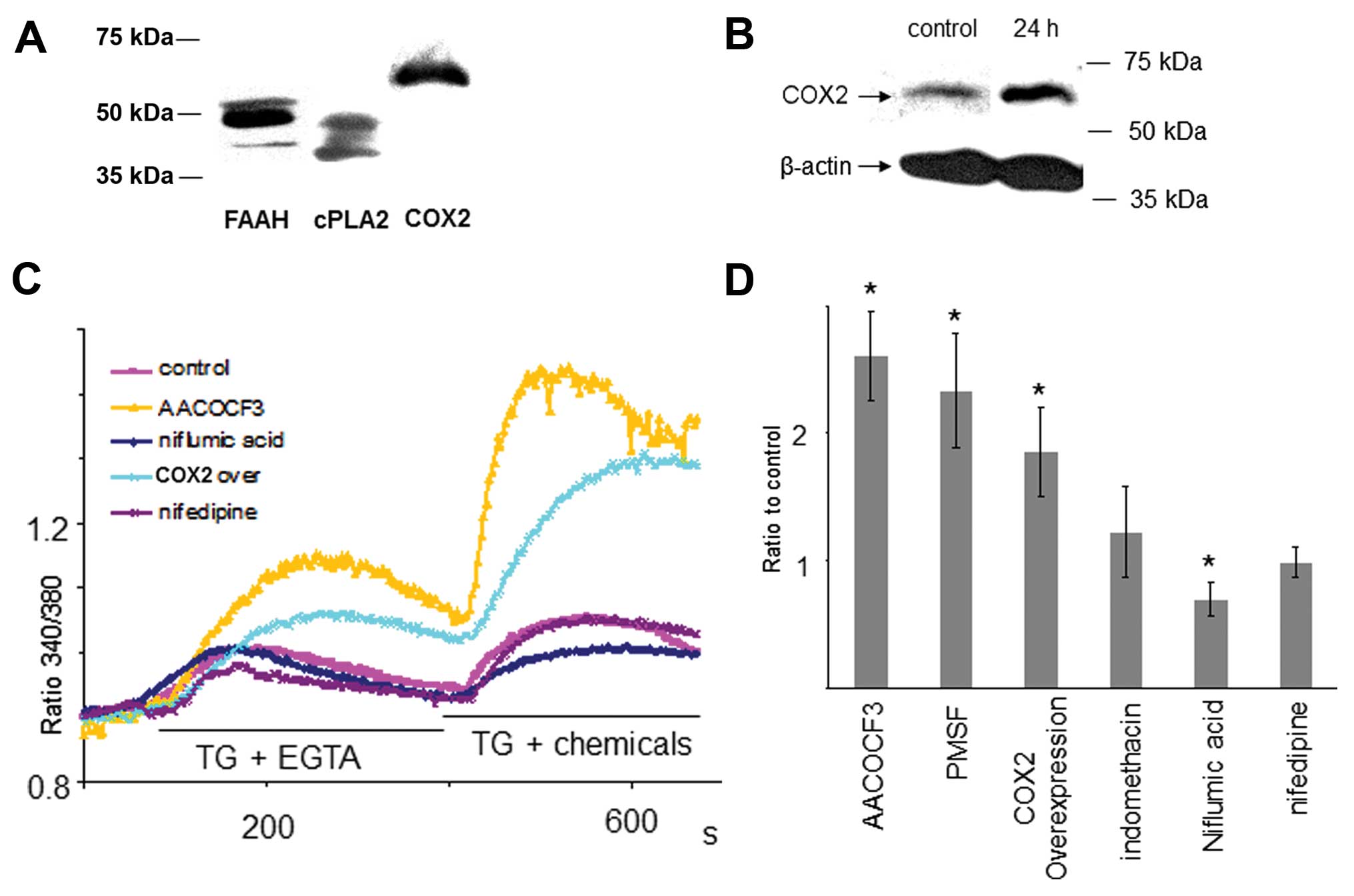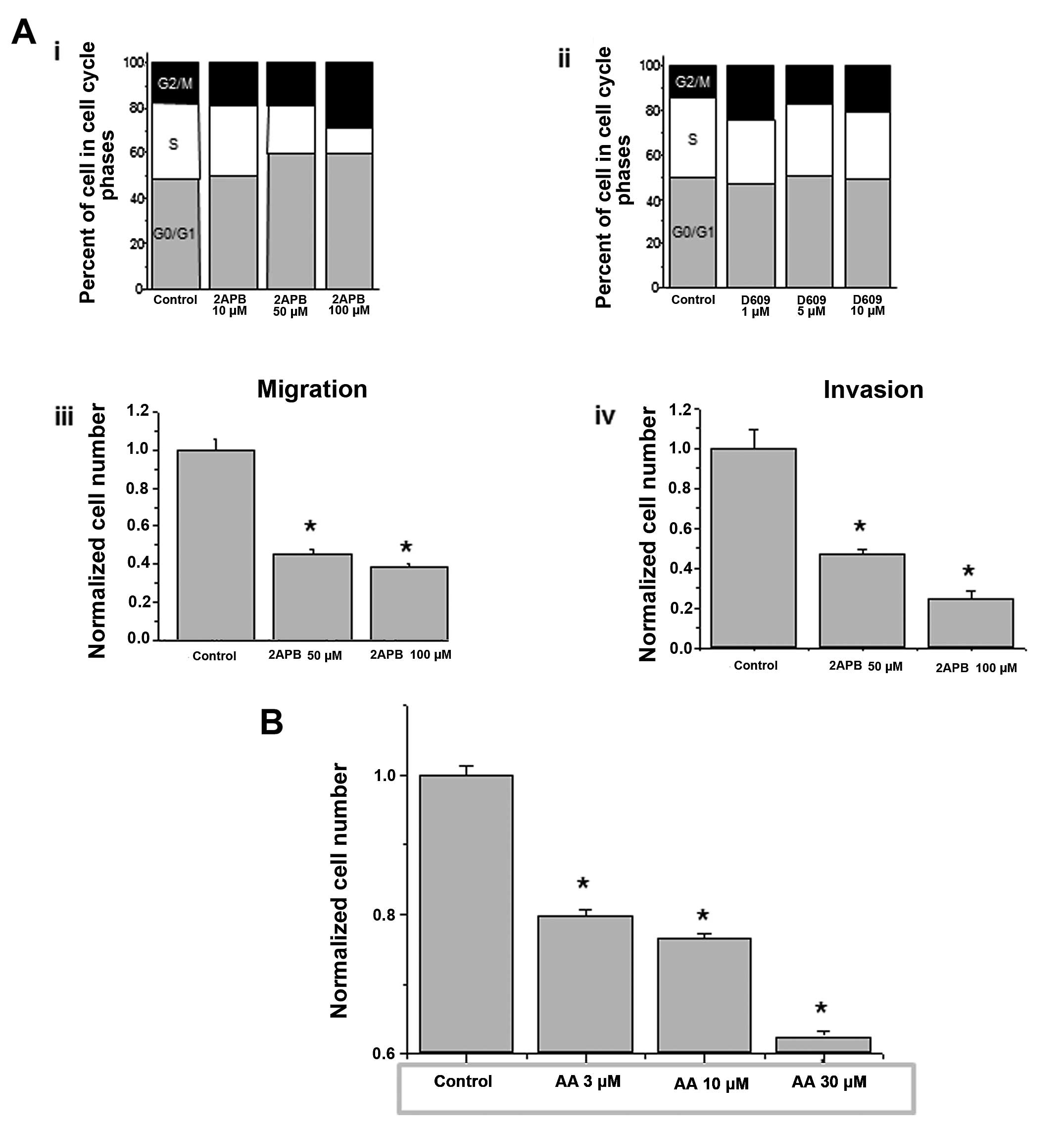|
1.
|
B WeigeltLJ van’t VeerHard-wired genotype
in metastatic breast cancerCell
Cycle3756757200410.4161/cc.3.6.92315153810
|
|
2.
|
M NoguchiDP RoseM EarashiI MiyazakiThe
role of fatty acids and eicosanoid synthesis inhibitors in breast
carcinomaOncology52265271199510.1159/0002274717777237
|
|
3.
|
H ChamrasA ArdashianD HeberJA GlaspyFatty
acid modulation of MCF-7 human breast cancer cell proliferation,
apoptosis and differentiationJ Nutr
Biochem13711716200210.1016/S0955-2863(02)00230-912550055
|
|
4.
|
L De PetrocellisD MelckA PalmisanoThe
endogenous cannabinoid anandamide inhibits human breast cancer cell
proliferationProc Natl Acad Sci USA958375838019989653194
|
|
5.
|
LD YeeDC YoungTJ RosolAM VanbuskirkSK
ClintonDietary (n-3) polyunsaturated fatty acids inhibit
HER-2/neu-induced breast cancer in mice independently of the PPARγ
ligand rosiglitazoneJ Nutr135983988200515867269
|
|
6.
|
B SinghA LucciRole of cyclooxygenase-2 in
breast cancerJ Surg
Res108173179200210.1006/jsre.2002.653212472107
|
|
7.
|
S ZhaWR GageJ SauvageotCyclooxygenase-2 is
up-regulated in proliferative inflammatory atrophy of the prostate,
but not in prostate carcinomaCancer Res6186178623200111751373
|
|
8.
|
E HoriaBA WatkinsComplementary actions of
docosahexaenoic acid and genistein on COX-2, PGE2 and invasiveness
in MDA-MB-231 breast cancer
cellsCarcinogenesis28809815200710.1093/carcin/bgl18317052999
|
|
9.
|
JY LiouN AleksicSF ChenTJ HanSK ShyueKK
WuMitochondrial localization of cyclooxygenase-2 and
calcium-independent phospholipase A(2) in human cancer cells:
Implication in apoptosis resistanceExp Cell
Res3067584200510.1016/j.yexcr.2005.01.01115878334
|
|
10.
|
B ArunP GossThe role of COX-2 inhibition
in breast cancer treatment and preventionSemin
Oncol312229200410.1053/j.seminoncol.2004.03.04215179621
|
|
11.
|
HJ MurffXO ShuH LiDietary polyunsaturated
fatty acids and breast cancer risk in Chinese women: a prospective
cohort studyInt J
Cancer12814341441201110.1002/ijc.2570320878979
|
|
12.
|
C DenkertKJ WinzerS HauptmannPrognostic
impact of cyclooxygenase-2 in breast cancerClin Breast
Cancer4428433200410.3816/CBC.2004.n.00615023244
|
|
13.
|
DJ BeechK MurakiR FlemmingNon-selective
cationic channels of smooth muscle and the mammalian homologues of
Drosophila TRPJ
Physiol559685706200410.1113/jphysiol.2004.06873415272031
|
|
14.
|
B NiliusStore-operated Ca2+
entry channels: still elusive!Sci STKE 2004e362004
|
|
15.
|
C MontellPhysiology, phylogeny, and
functions of the TRP superfamily of cation channelsSci STKE 2001:
re1200110.1126/stke.2001.90.re111752662
|
|
16.
|
V SydorenkoY ShubaS
ThebaultReceptor-coupled, DAG-gated Ca2+-permeable
cationic channels in LNCaP human prostate cancer epithelial cellsJ
Physiol548823836200312724346
|
|
17.
|
Y El HianiA AhidouchM RoudbarakiS GueninG
BruleH Ouadid-AhidouchCalcium-sensing receptor stimulation induces
nonselective cation channel activation in breast cancer cellsJ
Membr Biol211127137200617041782
|
|
18.
|
I Dhennin-DuthilleM GautierM FaouziHigh
expression of transient receptor potential channels in human breast
cancer epithelial cells and tissues: correlation with pathological
parametersCell Physiol Biochem28813822201110.1159/000335795
|
|
19.
|
B MinkeB CookTRP channel proteins and
signal transductionPhysiol Rev82429472200211917094
|
|
20.
|
DE ClaphamTRP channels as cellular
sensorsNature426517524200310.1038/nature0219614654832
|
|
21.
|
A MottolaS AntoniottiD LovisoloL
MunaronRegulation of noncapacitative calcium entry by arachidonic
acid and nitric oxide in endothelial cellsFASEB
J1920752077200516204355
|
|
22.
|
B NiliusG DroogmansIon channels and their
functional role in vascular endotheliumPhysiol
Rev8114151459200111581493
|
|
23.
|
LC NuttleAL LigonKR FarrellRL
HesterInhibition of phospholipase A2 attenuates functional
hyperemia in the hamster cremaster muscleAm J
Physiol276H1289H1294199910199854
|
|
24.
|
S ChybP RaghuRC HardiePolyunsaturated
fatty acids activate the Drosophila light-sensitive channels
TRP and TRPLNature397255259199910.1038/16703
|
|
25.
|
H WatanabeJ VriensJ PrenenG DroogmansT
VoetsB NiliusAnandamide and arachidonic acid use
epoxyeicosatrienoic acids to activate TRPV4
channelsNature424434438200310.1038/nature0180712879072
|
|
26.
|
M GoelWG SinkinsWP SchillingSelective
association of TRPC channel subunits in rat brain synaptosomesJ
Biol Chem2774830348310200210.1074/jbc.M20788220012377790
|
|
27.
|
MC BunielWP SchillingDL KunzeDistribution
of transient receptor potential channels in the rat carotid
chemosensory pathwayJ Comp
Neurol464404413200310.1002/cne.1079812900933
|
|
28.
|
C ZittAG ObukhovC StrubingExpression of
TRPC3 in Chinese hamster ovary cells results in calcium-activated
cation currents not related to store depletionJ Cell
Biol13813331341199710.1083/jcb.138.6.1333
|
|
29.
|
T HofmannAG ObukhovM SchaeferC HarteneckT
GudermannG SchultzDirect activation of human TRPC6 and TRPC3
channels by
diacylglycerolNature397259263199910.1038/167119930701
|
|
30.
|
E KaznacheyevaL GlushankovaV
BugajSuppression of TRPC3 leads to disappearance of store-operated
channels and formation of a new type of store-independent channels
in A431 cellsJ Biol Chem2822365523662200710.1074/jbc.M608378200
|
|
31.
|
X LiuBC BandyopadhyayBB SinghK GroschnerIS
AmbudkarMolecular analysis of a store-operated and
2-acetyl-sn-glycerol-sensitive non-selective cation channel.
Heteromeric assembly of TRPC1-TRPC3J Biol
Chem2802160021606200510.1074/jbc.C40049220015834157
|
|
32.
|
BC BandyopadhyayWD SwaimX LiuRS RedmanRL
PattersonIS AmbudkarApical localization of a functional
TRPC3/TRPC6-Ca2+-signaling complex in polarized
epithelial cells. Role in apical Ca2+ influxJ Biol
Chem2801290812916200515623527
|
|
33.
|
H MevesModulation of ion channels by
arachidonic acidProg
Neurobiol43175186199410.1016/0301-0082(94)90012-47526418
|
|
34.
|
H SchmittH MevesModulation of neuronal
calcium channels by arachidonic acid and related substancesJ Membr
Biol145233244199510.1007/BF002327157563024
|
|
35.
|
EA DennisDiversity of group types,
regulation, and function of phospholipase A2J Biol
Chem269130571306019948175726
|
|
36.
|
EJ AckermannES KempnerEA
DennisCa(2+)-independent cytosolic phospholipase A2 from
macrophage-like P388D1 cells. Isolation and characterizationJ Biol
Chem269922792331994
|
|
37.
|
EA DennisThe growing phospholipase A2
superfamily of signal transduction enzymesTrends Biochem
Sci2212199710.1016/S0968-0004(96)20031-39020581
|
|
38.
|
VE SteeleET HawkJL VinerRA LubetMechanisms
and applications of non-steroidal anti-inflammatory drugs in the
chemoprevention of cancerMutat Res523–524137144200312628511
|
|
39.
|
MK JungnickelH MarreroL BirnbaumerJR
LemosHM FlormanTrp2 regulates entry of Ca2+ into mouse
sperm triggered by egg ZP3Nat Cell
Biol3499502200110.1038/3507457011331878
|
|
40.
|
SZ XuDJ BeechTrpC1 is a membrane-spanning
subunit of store-operated Ca(2+) channels in native vascular smooth
muscle cellsCirc Res888487200111139478
|
|
41.
|
F Vanden AbeeleL LemonnierS ThebaultTwo
types of store-operated Ca2+ channels with different
activation modes and molecular origin in LNCaP human prostate
cancer epithelial cellsJ Biol Chem2793032630337200415138280
|
|
42.
|
JW Putney JrM TrebakG VazquezB WedelGS
BirdSignalling mechanisms for TRPC3 channelsNovartis Found
Symp258123133discussion 133–139, 155–159, 263–266, 2004
|
|
43.
|
C BaldiG VazquezJC CalvoR BolandTRPC3-like
protein is involved in the capacitative cation entry induced by
1alpha,25-dihydroxy-vitamin D3 in ROS 17/2.8 osteoblastic cellsJ
Cell Biochem90197205200310.1002/jcb.1061212938168
|
|
44.
|
S ThebaultA ZholosA
EnfissiReceptor-operated Ca2+ entry mediated by
TRPC3/TRPC6 proteins in rat prostate smooth muscle (PS1) cell lineJ
Cell Physiol204320328200515672411
|
|
45.
|
G VazquezBJ WedelM TrebakG St John BirdJW
Putney JrExpression level of the canonical transient receptor
potential 3 (TRPC3) channel determines its mechanism of activationJ
Biol Chem2782164921654200310.1074/jbc.M30216220012686562
|
|
46.
|
TJ ShuttleworthArachidonic acid activates
the noncapacitative entry of Ca2+ during
[Ca2+]i oscillationsJ Biol
Chem271217202172519968702966
|
|
47.
|
TJ ShuttleworthJL ThompsonMuscarinic
receptor activation of arachidonate-mediated Ca2+ entry
in HEK293 cells is independent of phospholipase CJ Biol
Chem2733263632643199810.1074/jbc.273.49.326369830003
|
|
48.
|
O MignenTJ ShuttleworthI(ARC), a novel
arachidonate-regulated, noncapacitative Ca(2+) entry channelJ Biol
Chem275911491192000
|
|
49.
|
O MignenJL ThompsonTJ
ShuttleworthCa2+ selectivity and fatty acid specificity
of the noncapacitative, arachidonate-regulated Ca2+
(ARC) channelsJ Biol Chem27810174101812003
|
|
50.
|
TJ ShuttleworthJL ThompsonO MignenARC
channels: a novel pathway for receptor-activated calcium entry
(Review)Physiology
(Bethesda)19355361200410.1152/physiol.00018.200415546853
|
|
51.
|
D LuoLM BroadGS BirdJW Putney JrMutual
antagonism of calcium entry by capacitative and arachidonic
acid-mediated calcium entry pathwaysJ Biol
Chem2762018620189200110.1074/jbc.M10032720011274150
|
|
52.
|
O MignenJL ThompsonTJ
ShuttleworthReciprocal regulation of capacitative and
arachidonate-regulated noncapacitative Ca2+ entry
pathwaysJ Biol
Chem2763567635683200110.1074/jbc.M10562620011470795
|
|
53.
|
GN HuangW ZengJY KimSTIM1
carboxyl-terminus activates native SOC, I(crac) and TRPC1
channelsNat Cell Biol810031010200610.1038/ncb145416906149
|
|
54.
|
D OliverCC LienM SoomT BaukrowitzP JonasB
FaklerFunctional conversion between A-type and delayed rectifier
K+ channels by membrane
lipidsScience304265270200410.1126/science.109411315031437
|
|
55.
|
AR BrashArachidonic acid as a bioactive
moleculeJ Clin Invest10713391345200110.1172/JCI1321011390413
|
|
56.
|
GY SunJ XuMD JensenPhospholipase A2 in
astrocytes: responses to oxidative stress, inflammation, and G
protein-coupled receptor agonistsMol
Neurobiol312742200510.1385/MN:31:1-3:02715953810
|













